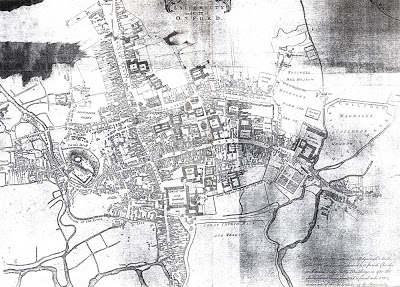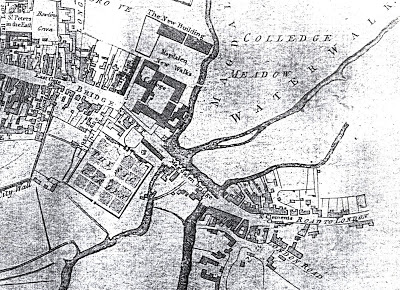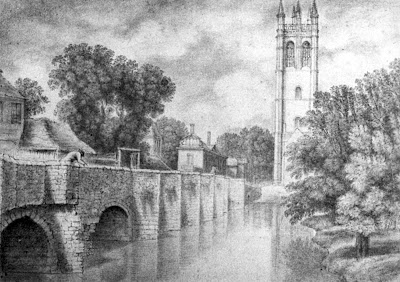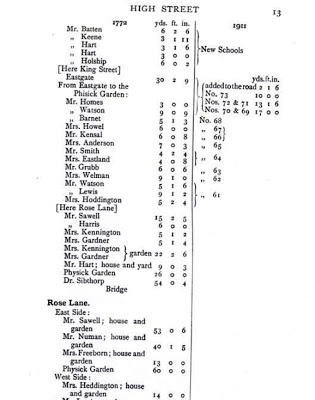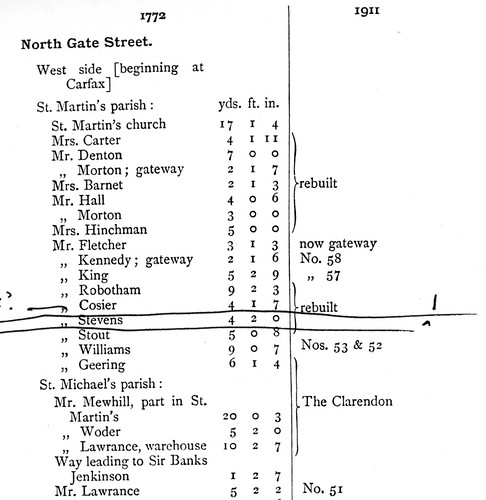I’ve spent a very interesting morning in the archives at Christ Church college, researching as part of the East Oxford Archaeology Project. I had no fixed idea as to what I wanted to look for but was interested to see where the various material on offer would lead me.
I started by looking at a large and beautiful map of 1777 which showed the field system in East Oxford along with the names of fields and some of the individual furlongs. The abundance of units of measurement are quite baffling but nonetheless very poetic: furlongs, perches, chains, rods etc. and the way locations of land are described equally interesting; for example “The field called the Lakes begins next to Drove Acre Meer shooting onto the Marsh.”
A meer as far as I’ve been able to ascertain is a boundary deriving from the Old English world mǣre. Interestingly, Drove Acre still exists today in the form of Drove Acre Road, which joins with Ridgefield Road, so named after the old Ridge Field on which it’s built. Before I go into other field names, I want to try and identify the different units of measurement.
A rood is a unit describing an area of land and is equivalent to 1/4 acre. An acre is therefore 4 roods. In terms of length, an acre is a furlong (a furrowlong) which is equivalent to 10 chains or 220 yards. A chain therefore is 22 yards. A rod, pole or perch is 5 1/2 yards. A mile is 8 furlongs.
I also found a unit called a butt, which I believe is where the oxen (ploughing a furlong) turned and rested where one acre butted onto the next creating a small mound of earth.
The names of the main fields in this area – as I discovered in a document of 1814 – are as follows:
Bartholomew Field
Ridge Field
Compass Field
The Lakes
Broad Field
Church Field
Far Field
Wood Field
Open Field Meadow
The name Far Field makes sense in that it’s situated some way from town. But The Lakes?
Within these fields, individual furlongs were also given names, such as:
Pressmore Furlong
London Way Furlong
Ridge Furlong
Furlong by the Mead Hedge
Clay Pits Furlong
Furlong Shooting on Breaden Hill
Short Furlong in Catwell
Brook Furlong
Hare Hedge Furlong
Croft Furlong by Bullingdon Green
The word shoot or shooting is used a lot to describe the location of land, such as ‘Furlong shooting on Sander’s Marsh.’ I think this must mean that the furlong joins or abuts the marsh. ‘The furlong that shoots on the alms-house,’ for example seems to describe land that joins the alms-house which I think describes those in St. Clements.
What interests me is how differently this area of Oxford would have been known to those who lived 200 years ago. It’s an obvious point given that much of what were fields are now houses, but it’s the names that interest. How did these places acquire these names, and why have some survived and others haven’t? (It’s probably just as well that no-one lives in Shittern Corner today).
